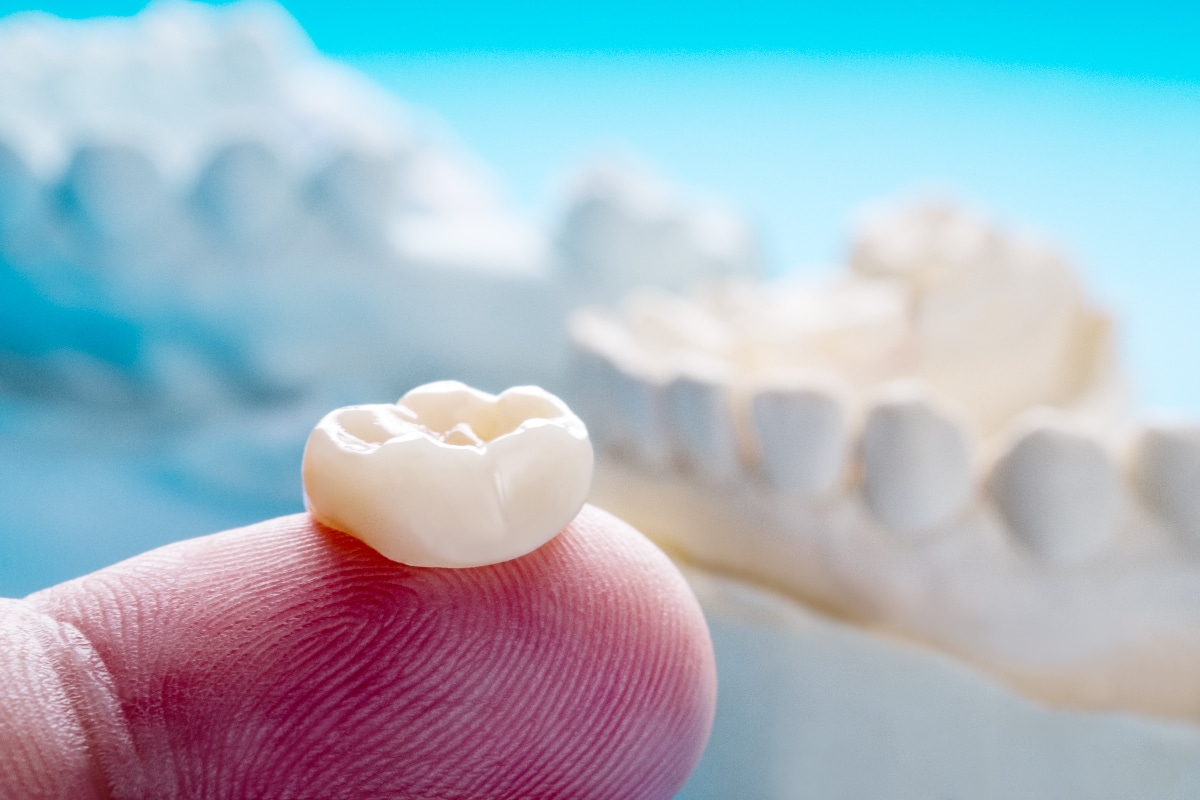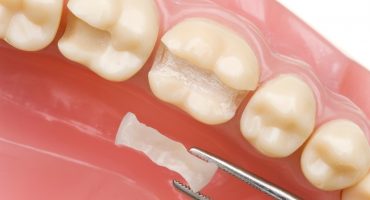If the natural tooth crown, that is, the externally visible part of the tooth, is too badly damaged, the dentist often suggests the attachment a dental crown. This is the case when the tooth stump is still stable enough and at least 50 percent tooth substance is still present.
When do dental crowns come into action?
The use of crowns is an option, if you can not repair teeth damaged by tooth decay or an accident. Another reason to do a crowning is that a root-treated tooth would break too fast without the artificial tooth crown. In addition, the dentist also uses abutment teeth crowns. These are teeth that serve to anchor bridges or removable dentures.
The crown produced in the dental laboratory after an impression is formed according to the natural tooth as a jaw, cutting, grinding or canine shaped and placed on the tooth stump like a hat. It stabilizes the remaining tooth substance and ensures that you do not see the damage.
Dental crowns usually do not stand out in color from their natural environment. To be able to chew well with them, they are neither too high nor too low. In addition, the distance to the adjacent teeth is not too large. Crowns ideally sit precisely on the tooth stump so that neither tooth decay or gum inflammation (gingivitis) occurs. Suitable dentures, are attached permanently with cement or - provisionally as a plastic crown - with a special adhesive technique.
After the pretreatment of the tooth to be crowned, certain waiting times have to be observed before putting on the tooth crown. Because if later complications come, the dentist has to remove it first. After a root canal treatment, for example, is 4 to 6 months, after the implantation of a dental implant is 3 to 6 months. In both cases, an X-ray inspection must be performed before the crowning.
What is an implant crown?
An implant crown is a crown that sits on a dental implant. It is screwed directly to the artificial tooth root if it is a one-piece implant. For two-part implants, place them on the abutment (implant abutment).
Implant crowns consist of either all-ceramic (for example, for the anterior region) or of composite materials: One covers a metal cap with ceramic, so that the implant crown matches the best possible color to the neighboring teeth.
Types of dental crowns
By default, a crown is used where the crown is not visible. This is the case, for example, in the molar area. It is made entirely of metal, mostly NEM materials. For example, the dentist uses cost-effective alloys that contain no precious metal. If you want to invest more, you can also have a dental crown made from a gold alloy. Solid cast crowns are extremely durable and, thanks to their robustness, are well suited for anchoring bridges. However, their high thermal conductivity takes some getting used to. It manifests itself when the patient drinks or eats something hot.
Veneered (VMC crowns, veneer metal-ceramic crowns) have a gold shell as the core, which is covered in ceramic in whole or in part with the other teeth matching color. VMC crowns are among the dental crowns most commonly used by dentists.
All-ceramic crowns are made of porcelain (all-ceramic). They are also called mantle crowns or jacket crowns and used exclusively in the visible part of the dentition such as in the area of the front and incisors. All-ceramic crowns look very much like natural teeth, but are much harder than these. They are very well biocompatible and have the advantage that bacterial plaque deposits do not deposit on them as much as on plastic crowns.
Tooth crowns made of plastic used by the dentist usually only as a temporary, because plastic wears faster than other crown materials. In addition, they discolor after about 8 years, when the patient wears them as a permanent provisional.
Pin crowns (crowns with abutment, pin teeth) are anchored using a pin in the tooth. For this, metal screws or metal pins but also ceramics and composite materials, are used. The dentist only uses the crown for teeth with already dead nerves, ie after completion of the root canal treatment.
If the visible part of the natural tooth is not affected, you set up a partial crown. It then covers the invisible tooth area. Partial crowns are not as strong as solid crowns.
Advantages and Disadvantages of Dental Crowns
Advantages
Crowns offer many advantages.
- they are a solid denture.
- are a durable denture, the life depends, among other things, on the material used.
- protect the underlying tooth stump.
- feel the same in the mouth as a natural tooth crown.
- with the exception of plastic crowns are as resilient as healthy natural tooth crowns.
- can be adapted in color to the surrounding teeth, so that the dentition looks natural.
Disadvantages
Dental crowns have the disadvantage that you have to the grind the natural tooth before placing the crown. Because otherwise it could happen that the dentures are not exactly seated and cause problems for the dental patient.
The problem is that when grinding more tooth substance is removed than is necessary, for example, to adjust a filling. After grinding, only the dentin remains. Dentin is the yellowish part under the bright enamel. This also makes the tooth more sensitive.
How much do dental crowns cost?
The question of how much a crown costs, can not be answered flat rate, since each tooth crown is a customization, which is specially adapted to the individual oral situation of the patient. In addition, the dentists differ in terms of the costs they charge. This not only affects their own use, but also that of the dental laboratory with which the dentist works. Of course, there are also the costs for the used crown material. For example, all-ceramic crowns are generally more expensive than VMC crowns. Partial crowns are calculated differently than full crowns, which cover the entire tooth.
Anyone insured by the statutory health insurance company receives a treatment and cost plan (TCP) prepared by the dental practice after preparation of the tooth stump (removal of carious sites, application of a structural filling, abrading of the enamel, application of a temporary restoration), the production of X-ray images and an impression for the dental laboratory, so a kind of cost estimate. So he can roughly estimate what later costs come to him.
The patient submits the treatment and cost plan to the responsible service provider and authorizes him / her. If there is a medical indication - that is, the treatment is necessary for his health - the health insurance company takes a fixed subsidy. It is based on the fixed subsidy scheme established in 2005. In special cases, the health insurance company even pays the costs for the dental crown completely. Patients with a complete bonus booklet have to pay another 20 to 30 percent less. However, if the patient chooses a crown that deviates from the standard care, he will have to bear the additional costs that will then be incurred.
Dental patients who are privately insured do not need a treatment and cost plan for submission to the service provider. However, it is recommended that you have it created anyway to be safe from unpleasant surprises.
Weitere Beiträge

Immediate Implant
Patients who have had their teeth pulled had, at least temporarily, come to terms with an unsightly tooth gap. Thanks to modern technologies and materials, however, it is now possible in many practices and clinics to replace the tooth immediately after removal with an immediate implant.



